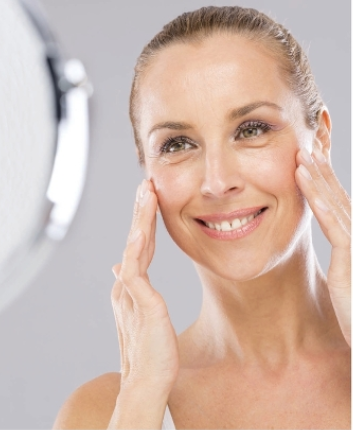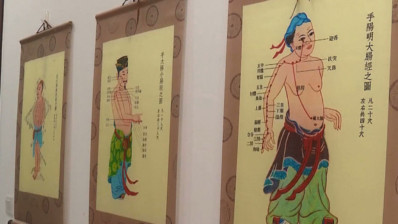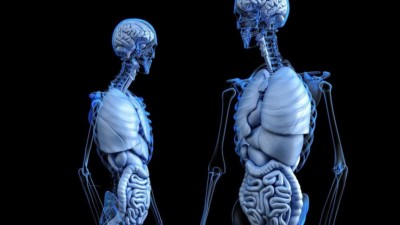This article was written by Tom Bayne, DC. I just wanted to share it with you as it has much great information. L.P.
 While aging as a whole is inevitable, some aspects of aging may actually be caused by a simple vitamin deficiency. That’s right – wrinkles, stiff muscles and decreased athletic performance can all be symptoms of just one micronutrient deficiency: vitamin K2.
While aging as a whole is inevitable, some aspects of aging may actually be caused by a simple vitamin deficiency. That’s right – wrinkles, stiff muscles and decreased athletic performance can all be symptoms of just one micronutrient deficiency: vitamin K2.
Although K2 was discovered about 80 years ago, scientists are just now beginning to understand the major role this vitamin plays in the body. Some of the main benefits include improved heart and bone health, as vitamin K2 is responsible for removing calcium from the tissues and shuttling it back into the bone. As a result, vitamin K2 has been shown to be incredibly useful for conditions like atherosclerosis, vascular calcification and osteoporosis.1
However, some of the more recent discoveries demonstrate that vitamin K2 can play a role in the treatment and prevention of wrinkles, varicose veins, diabetes, and even prostate, breast and liver cancers.2
Healthy Skin
To maintain youthful, healthy skin, the body needs a plentiful supply of collagen and elastin. Collagen is the protein responsible for skin’s firm and supple nature, although it also plays a role in connecting the tissues found in bone, muscles, tendons, cartilage and organs. Elastin is the protein that gives structure to the skin and organs, allowing the skin to resume its original shape after stretching. Together, these proteins help maintain skin that is firm, yet elastic.
However, by age 20, collagen stores begin to decline by 10 percent every decade, which can have negative effects on the skin as well as the bones.3-4 In fact, some studies show that the severity of a woman’s facial wrinkles after menopause can actually predict her risk of osteoporosis, mostly due to the fact that collagen loss in the skin occurs at the same rate as collagen loss in the bone.5
Until now, creams and lotions have led the anti-aging movement in an attempt to replace collagen stores, but research now indicates that excessive skin wrinkling may actually be a sign of vitamin K2 deficiency.
In population studies, Japanese women appear to have fewer wrinkles and more supple skin than women of the same age living in North America.5 Some people attribute this youthful skin to Asian genetics, but even when compared to women from Shanghai and Bangkok, Japanese women appear to show the least visible signs of aging. Interestingly, the women from these three Asian groups share many similar diet and lifestyle factors, with one exception – the Japanese women have a much higher consumption of natto.
Natto, or fermented soybean, is considered a staple of Japanese cuisine and happens to be the richest food source of vitamin K2. As a result, Japanese women have much higher circulating levels of this vitamin than any other Asian population, which may account for their more youthful complexions.
Athletic Performance
One of the main reasons aerobic athletic performance declines with age is that the body becomes less effective at utilizing oxygen. The maximal ability to utilize oxygen can be measured by VO2max, an assessment of how much oxygen your body can use per kilogram of body weight. As a result, a high VO2max will indicate that a person can effectively utilize oxygen, which is often seen in well-trained endurance athletes.
Unfortunately, after the age of 30, VO2max will begin to decline. For non-athletes, VO2max tends to decline by about 10 percent every decade. However, athletes who continue their rigorous training can reduce the decline to only five percent every decade.6 The main reason that VO2max declines with age is because the maximal heart rate (max HR) decreases as well.
Because cardiac output is the product of stroke volume and maximal heart rate (cardiac output = stroke volume x maximal heart rate), a decrease in max HR will directly decrease cardiac output and, in turn, oxygen delivery to the muscles. This translates to a lower VO2max and decreased athletic endurance with age.
Fortunately, vitamin K2 appears to increase cardiac output by improving mitochondrial function. In fact, a recent study conducted at the University of North Texas found that only eight weeks of high-dose supplementation with vitamin K2 (MK-4) was associated with a whopping 12 percent increase in maximal cardiac output in aerobically trained athletes.7 Interestingly, it’s estimated to take 6-9 months of high-intensity training without K2 supplementation to achieve the same increase in cardiac output.
Researchers also reported slight increases in stroke volume and maximal heart rate in the test group, which may help explain the significant increase in cardiac output.
The Vitamin K2 Solution
The good news is that many of the conditions discussed in this article can be remedied with increased intake of vitamin K2. The bad news is that vitamin K2 is fairly elusive in the modern Western diet. The best natural source of K2 is natto, which contains approximately 1,100 mcg of vitamin K2 in a 3.5 oz serving. However, natto is very pungent and bitter, which can make patient compliance a significant challenge.
Other good sources of vitamin K2 include goose liver, various organ meats, and soft cheeses like Gouda and Brie. These natural food sources contain vitamin K2 in its menaquinone-4 form (MK-4), which has a short half-life of roughly 4-6 hours. This means patients would need to consume these foods every 4-6 hours in order to maintain optimal K2 levels in the blood.
When considering supplementation with K2, research indicates that MK-7 is superior to MK-4 and vitamin K1 in regards to half-life, bioavailability and safety. It’s also important to choose naturally fermented forms of MK-7, as synthetic MK-7 currently is not as well-studied or held to the same quality standards as natural MK-7.
References
- Cranenburg EC, et al. Vitamin K: the coagulation vitamin that became omnipotent. Thromb Haemost, 2007;98(1):120-5.
- Cario-Toumaniantz C, et al. Identification of differentially expressed genes in human varicose veins: involvement of matrix gla protein in extracellular matrix remodeling. J Vasc Res, 2007;44(6):444-59.
- Shuster S. Osteoporosis, a unitary hypothesis of collagen loss in skin and bone. Med Hypotheses, 2005;65(3):426-32.
- Gheduzzi D, et al. Matrix Gla protein is involved in elastic fiber calcification in the dermins of pseudoxanthoma elasticum patients. Lab Invest, 2007;87(10):998-1008.
- Yoneda PP, et al. Association between skin thickness and bone density in adult women. An Bras Dermatol, 2011;86(5):878-84.
- Tanaka H, Seals DR. Endurance exercise performance in Masters athletes: age-associated changes and underlying physiological mechanisms. J Physiol, 2008;586(1):55-63.
- McFarlin BK, et al. Oral consumption of vitamin K2 for 8 weeks associated with increased maximal cardiac output during exercise. Altern Ther Health Med, 2017;23(4):26-32.
Dr. Tom Bayne, president of Physicians Exclusive, LLC, is a chiropractic physician specializing in nutritional therapies, and an international expert in digestive health and detoxification. His passion for holistic medicine led him to Europe, where he had executive roles at two top natural health companies.
 Traditional Chinese medical treatments have been around for millennia – and embraced the world over.Scientists, however, are skeptics by profession and look for that ultimate seal of approval: “proof.”As CGTN’s Frances Kuo reports, researchers are stepping up to the challenge and finding some success linking traditional methods to modern science.Acupuncture originated in China thousands of years ago and is popular today all over the world.Practitioners insert thin needles through the skin of a patient, stimulating what they call “acupoints” – to improve a whole host of conditions.But despite generations of anecdotal accounts of its effectiveness, there’s never been absolute scientific proof that it works.Recently though, Chinese scientists have made breakthroughs in understanding.Key to acupuncture’s effectiveness is the location of the acupoints, found where there are concentrations of human mast cells tied to our immune system.“The Mast Cell has a kind of sensitive protein that can feel the stimulation,” said Huang Meng, Research Assistant at Fudan University. “When it’s activated, the cell releases a kind of bio-active matter, which will, in turn, stimulate the blood capillaries and nerves around it. This will produce a signal for the curative effect.”
Traditional Chinese medical treatments have been around for millennia – and embraced the world over.Scientists, however, are skeptics by profession and look for that ultimate seal of approval: “proof.”As CGTN’s Frances Kuo reports, researchers are stepping up to the challenge and finding some success linking traditional methods to modern science.Acupuncture originated in China thousands of years ago and is popular today all over the world.Practitioners insert thin needles through the skin of a patient, stimulating what they call “acupoints” – to improve a whole host of conditions.But despite generations of anecdotal accounts of its effectiveness, there’s never been absolute scientific proof that it works.Recently though, Chinese scientists have made breakthroughs in understanding.Key to acupuncture’s effectiveness is the location of the acupoints, found where there are concentrations of human mast cells tied to our immune system.“The Mast Cell has a kind of sensitive protein that can feel the stimulation,” said Huang Meng, Research Assistant at Fudan University. “When it’s activated, the cell releases a kind of bio-active matter, which will, in turn, stimulate the blood capillaries and nerves around it. This will produce a signal for the curative effect.”
 While aging as a whole is inevitable, some aspects of aging may actually be caused by a simple vitamin deficiency. That’s right – wrinkles, stiff muscles and decreased athletic performance can all be symptoms of just one micronutrient deficiency: vitamin K2.
While aging as a whole is inevitable, some aspects of aging may actually be caused by a simple vitamin deficiency. That’s right – wrinkles, stiff muscles and decreased athletic performance can all be symptoms of just one micronutrient deficiency: vitamin K2. In Chinese Medicine the Intestines of the human are called “ Our second brain” for the last 4 thousand years. Now, the same term is used by western scientists. You’ve got brain cells in your butt. They make your colon smart.A team of scientists in Australia has just released a study with new
In Chinese Medicine the Intestines of the human are called “ Our second brain” for the last 4 thousand years. Now, the same term is used by western scientists. You’ve got brain cells in your butt. They make your colon smart.A team of scientists in Australia has just released a study with new